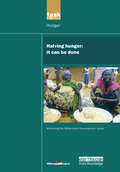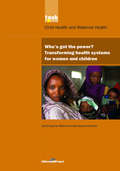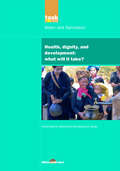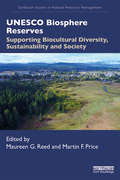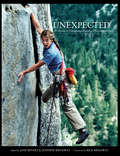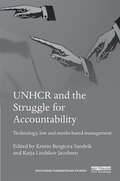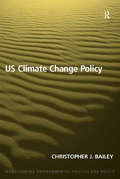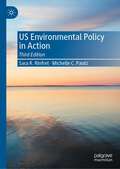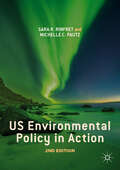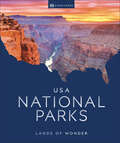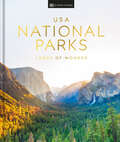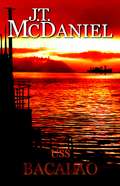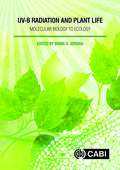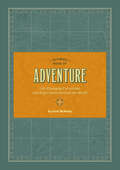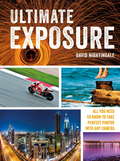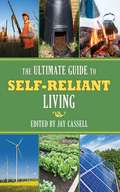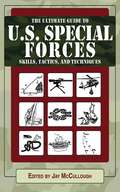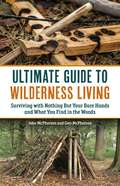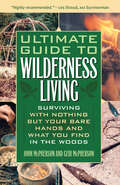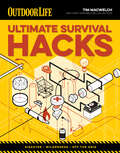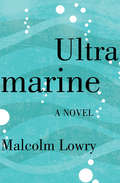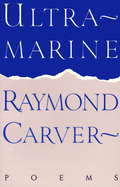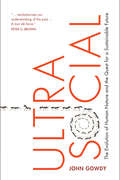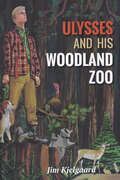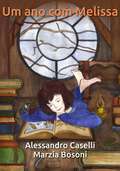- Table View
- List View
UN Millennium Development Library: It Can Be Done
by UN Millennium ProjectThe Millennium Development Goals, adopted at the UN Millennium Summit in 2000, are the world's targets for dramatically reducing extreme poverty in its many dimensions by 2015 income poverty, hunger, disease, exclusion, lack of infrastructure and shelter while promoting gender equality, education, health and environmental sustainability. These bold goals can be met in all parts of the world if nations follow through on their commitments to work together to meet them. Achieving the Millennium Development Goals offers the prospect of a more secure, just, and prosperous world for all. The UN Millennium Project was commissioned by United Nations Secretary-General Kofi Annan to develop a practical plan of action to meet the Millennium Development Goals. As an independent advisory body directed by Professor Jeffrey D. Sachs, the UN Millennium Project submitted its recommendations to the UN Secretary General in January 2005. The core of the UN Millennium Project's work has been carried out by 10 thematic Task Forces comprising more than 250 experts from around the world, including scientists, development practitioners, parliamentarians, policymakers, and representatives from civil society, UN agencies, the World Bank, the IMF, and the private sector. This report lays out the recommendations of the UN Millennium Project Task Force on Hunger in seven major categories: political action; national policy reforms; increased agricultural productivity for food insecure farmers; improved nutrition for the chronically hungry; productive safety nets for the acutely hungry; improved rural incomes and markets; and restoration and conservation of natural resources essential for food security. The task force strongly endorses the Secretary General's call for a 21st Century African Green Revolution. These bold yet practical approaches will enable countries in every region of the world to halve world hunger by 2015.
UN Millennium Development Library: Transforming Health Systems for Women and Children
by UN Millennium ProjectThe Millennium Development Goals, adopted at the UN Millennium Summit in 2000, are the world's targets for dramatically reducing extreme poverty in its many dimensions by 2015 income poverty, hunger, disease, exclusion, lack of infrastructure and shelter while promoting gender equality, education, health and environmental sustainability. These bold goals can be met in all parts of the world if nations follow through on their commitments to work together to meet them. Achieving the Millennium Development Goals offers the prospect of a more secure, just, and prosperous world for all. The UN Millennium Project was commissioned by United Nations Secretary-General Kofi Annan to develop a practical plan of action to meet the Millennium Development Goals. As an independent advisory body directed by Professor Jeffrey D. Sachs, the UN Millennium Project submitted its recommendations to the UN Secretary General in January 2005. The core of the UN Millennium Project's work has been carried out by 10 thematic Task Forces comprising more than 250 experts from around the world, including scientists, development practitioners, parliamentarians, policymakers, and representatives from civil society, UN agencies, the World Bank, the IMF, and the private sector. This report lays out the recommendations of the UN Millennium Project Task Force on Child and Maternal Health. The Task Force recommends the rapid and equitable scale-up of interventions like the Integrated Management of Childhood Illness, the universal provision of emergency obstetric care, and sexual and reproductive health services and rights be provided through strengthened health systems. This will require that health systems be seen as social institutions to which all members of society have a fundamental right. This bold yet practical approach will enable every country to reduce the under-five mortality rate by two-thirds and the maternal mortality rate by three-quarters by 2015.
UN Millennium Development Library: What Will it Take? (Un\millennium Development Library)
by UN Millennium ProjectThe Millennium Development Goals, adopted at the UN Millennium Summit in 2000, are the world's targets for dramatically reducing extreme poverty in its many dimensions by 2015 income poverty, hunger, disease, exclusion, lack of infrastructure and shelter while promoting gender equality, education, health and environmental sustainability. These bold goals can be met in all parts of the world if nations follow through on their commitments to work together to meet them. Achieving the Millennium Development Goals offers the prospect of a more secure, just, and prosperous world for all. The UN Millennium Project was commissioned by United Nations Secretary-General Kofi Annan to develop a practical plan of action to meet the Millennium Development Goals. As an independent advisory body directed by Professor Jeffrey D. Sachs, the UN Millennium Project submitted its recommendations to the UN Secretary General in January 2005. The core of the UN Millennium Project's work has been carried out by 10 thematic Task Forces comprising more than 250 experts from around the world, including scientists, development practitioners, parliamentarians, policymakers, and representatives from civil society, UN agencies, the World Bank, the IMF, and the private sector. In this report the UN Millennium Project Task Force on Water and Sanitation outlines the bold yet practical actions that are needed to increase access to water and sanitation. The report underscores the need to focus on the global sanitation crisis, which contributes to the death of 3900 children each day, improve domestic water supply, and invest in integrated development and management of water resources, all of which are necessary for countries to reduce poverty and hunger, improve health, advance gender equality and ensure environmental sustainability. Implementing the recommendations of this report will allow all countries to halve the proportion of people without access to safe water and sanitation by 2015.
UNESCO Biosphere Reserves: Supporting Biocultural Diversity, Sustainability and Society (Earthscan Studies in Natural Resource Management)
by Martin F. Price Maureen G. ReedUNESCO Biosphere Reserves (BRs) are designated areas in geographical regions of global socio-ecological significance. This definitive book shows their global relevance and contribution to environmental protection, biocultural diversity and education. Initiated in the 1970s as part of UNESCO’s Man and Biosphere (MAB) Programme, BRs share a set of common objectives, to support and demonstrate a balance between biodiversity conservation, sustainable development and research. The world’s 701 BRs form an international, intergovernmental network to support the aims of sustainability science, but this purpose has not always been widely understood. In three distinct sections, the book starts by outlining the origins of BRs and the MAB Programme, showing how they contribute to advancing sustainable development. The second section documents the evolution of BRs around the world, including case studies from each of the five UNESCO world regions. Each case study demonstrates how conservation, sustainable development and the role of scientific research have been interpreted locally. The book concludes by discussing thematic lessons to help understand the challenges and opportunities associated with sustainability science, providing a unique platform from which lessons can be learned. This includes how concepts become actions on the ground and how ideas can be taken up across sites at differing scales. This book will be of great interest to professionals engaged in conservation and sustainable development, NGOs, policy-makers and advanced students in environmental management, ecology, sustainability science, environmental anthropology and geography.
UNEXPECTED
by Rick Ridgeway Jennifer Ridgeway Jane SievertFrom the peak of a mountain or the barrel of a wave, Patagonia has collected some of the most spectacular sports imagery in history. Relive the achievements captured in Patagonia's history, as well as the joie de vivre fostered by nurturing a relationship with the great outdoors.Unique for a business enterprise, Patagonia's catalog devotes fully half its space to nonselling editorial content - to environmental and sport essays and above all to extraordinary photographs of wild places and active pursuits for which the company makes its clothes. Since 1980, Patagonia has invited customers and wilderness photographers to submit their best, most unexpected shots of life outdoors - of alpine climbing, bouldering in the desert, skiing untracked bowls, surfing secret spots, ocean crossings, first kayak descents and travel in unfamiliar places. The photos have poured in ever since (current rate: 60,000 per year), some from the famous (John Russell, Galen Rowell), others from respected photographers (Corey Rich) who had their first work published in these pages. Jane Sievert and Jennifer Ridgeway, Patagonia's current and founding photo editor, respectively, have been calling - and culling - the shots for three decades. This is their compendium of the 100-plus most compelling photos Patagonia has published - and a celebration of wilderness and outdoor-sport photography as an art and a practice.
UNHCR and the Struggle for Accountability: Technology, law and results-based management (Routledge Humanitarian Studies)
by Kristin Bergtora Sandvik Katja Lindskov JacobsenDespite the key importance of accountability for the legitimacy of humanitarian action, inadequate academic attention has been given to how the concept of accountability is evolving within the specific branches of the humanitarian enterprise. Up to now, there exists no comprehensive account of what we label the 'technologies of accountability', the effects of their interaction, or the question of how the current turn to decision-making software and biometrics as both the means and ends of accountability may contribute to reshaping humanitarian governance. UNHCR and the Struggle for Accountability explores the UNHCR's quest for accountability by viewing the UNHCR's accountability obligations through the web of institutional relationships within which the agency is placed (beneficiaries, host governments, implementing partners, donors, the Executive Committee and UNGA). The book takes a multidisciplinary approach in order to illuminate the various layers and relationships that constitute accountability and also to reflect on what constitutes good enough accountability. This book contributes to the discussion regarding how we construct knowledge about concepts in humanitarian studies and is a valuable resource for academics, researchers and professionals in the areas of anthropology, history, international relations, international law, science, technology studies and socio-legal studies.
US Climate Change Policy (Transforming Environmental Politics and Policy)
by Christopher J. BaileyThe United States is often perceived as sceptical, if not hostile, to the need to address man-made climate change. US government policy has undoubtedly disappointed environmentalists and scientists who believe more concerted action is needed, but a careful examination of the evidence reveals a number of policy actions designed to investigate, mitigate, and adapt to climate change have been implemented. Laws, regulatory action, and court rulings have led to advances in climate science, action to reduce levels of greenhouse gas emissions and efforts to prepare for the potential consequences of climate change. In this important book Chris Bailey explains and details the challenges and achievements of US climate change policy from its origins to the present day.
US Environmental Policy in Action
by Sara R. Rinfret Michelle C. PautzUS Environmental Policy in Action provides a comprehensive look at the creation, implementation, and evaluation of environmental policy, which is of particular importance in our current era of congressional gridlock, partisanship and polarization, and escalating debates about federal/state relations. With a continued focus on the front lines of environmental policy, Rinfret and Pautz take into account the major changes in the practice of US environmental policy during the Trump and Biden administrations. Providing real-life examples of how environmental policy works rather than solely discussing how congressional action produces environmental laws, this third edition of US Environmental Policy in Action offers a practical approach to understanding contemporary American environmental policy.
US Environmental Policy in Action: Practice And Implementation
by Sara R. Rinfret Michelle C. PautzUS Environmental Policy in Action provides a comprehensive look at the creation, implementation, and evaluation of environmental policy, which is of particular importance in our current era of congressional gridlock, increasing partisan rhetoric, and escalating debates about federal/state relations. Now in its second edition, this volume includes updated case studies, two new chapters on food policy and natural resource policy, and revised public opinion data. With a continued focus on the front lines of environmental policy, Rinfret and Pautz take into account the major changes in the practice of US environmental policy during the Trump administration. Providing real-life examples of how environmental policy works rather than solely discussing how congressional action produces environmental laws, US Environmental Policy in Action offers a practical approach to understanding contemporary American environmental policy.
USA National Parks: Lands of Wonder
by DK EyewitnessBreathtaking and awe-inspiring, the USA National Parks never fail to amaze. Distinguished by rust-red canyons, snow-capped peaks and silent forests, they&’re yours to roam. Immerse yourself and your family in these ancient lands, explore their heritage and find out what makes them unique.Whether it&’s your dream to check the Grand Canyon off your bucket list, discover Alaska&’s Denali Park, and explore Florida&’s Everglades, or if you&’re simply seeking inspiration for your next trip to the great outdoors, USA National Parks Lands of Wonder ensures you experience all the American wilderness has to offer. USA National Parks Lands of Wonder truly brings all 62 National Parks to life, celebrating the country&’s most breathtaking landscapes. USA National Parks is your ticket to the trip of a lifetime. Inside USA National Parks you will find: • Inspiring photography throughout that evokes the majesty of the national parks • &‘Focus On&’ sections including features on National Parks throughout each season, best times to visit, and geographical insights • Practical tips on what to enjoy during your trip, including popular hikes, bird-watching tips, and activities for the whole family to enjoy • &‘Did You Know?&’ sections featured throughout to test your knowledge on the culture, history and wildlife of the National Parks you visit • &‘Ways To Explore&’ sections featured throughout to maximize your adventures, offering ideas such as camping, picnicking, hiking, sledging, night-watching and walking • Expert led hike Trails with easy, moderate and challenging options to plan your route ahead of your trip • Covers: Yellowstone, Yosemite, Sequoia, Mount Rainier, Crater Lake, Wind Caves, Mesa Verde, Glacier Rocky Mountain, Lassen Volcanic, Hawai&’i Volcanoes, Denali, Grand Canyon, Zion, Acadia, Hot Springs, Bryce Canyon, Grand Teton, Carlsbad Caverns, Great Smoky Mountains, Shenandoah, Olympic, Kings Canyon, Isle Royale, Mammoth Cave, Big Bend, Everglades, Virgin Islands, Haleakalā, Petrified Forest, Canyonlands, North Cascades, Redwood, Capitol Reef, Arches, Guadalupe Mountains, Voyageurs, Theodore Roosevelt, Badlands, Channel Islands, Biscayne, Katma,i Glacier Bay, Gates of the Arctic, Kenai Fjords, Kobuk Valley, Lake Clark, Wrangell St. Elias, Great Basin, National Park of American Samoa, Dry Tortugas, Death Valley, Saguaro, Joshua Tree, Black Canyon of the Gunnison, Cuyahoga Valley, Congaree, Great Sand Dunes, Pinnacles, Gateway Arch, Indiana Dunes, White Sands Seeking more adventures in the USA? Don&’t forget to check out DK Eyewitness Southwest USA, DK Eyewitness Florida, DK Eyewitness New England, DK Eyewitness Hawaii, DK Eyewitness Pacific Northwest, and DK Eyewitness USA to make the most of your trip and achieve the adventure of a lifetime.About DK Eyewitness: At DK Eyewitness, we believe in the power of discovery. We make it easy for you to explore your dream destinations. DK Eyewitness travel guides have been helping travellers to make the most of their breaks since 1993. Filled with expert advice, striking photography and detailed illustrations, our highly visual DK Eyewitness guides will get you closer to your next adventure. We publish guides to more than 200 destinations, from pocket-sized city guides to comprehensive country guides. Named Top Guidebook Series at the 2020 Wanderlust Reader Travel Awards, we know that wherever you go next, your DK Eyewitness travel guides are the perfect companion.
USA National Parks: Lands of Wonder
by DK EyewitnessThe USA&’s National Parks truly are places of wonder: staggering landscapes of jaw-dropping dimensions and incredible diversity where you can stand on the very edge of civilization.They are the earth&’s breathing spaces, precious places to conserve nature and wildlife for future generations. Explore countless places to hike, camp, climb, swim, and paddle, where you and your family can create lifelong memories of freedom and wide-open spaces.The book contains inspiring narratives reflecting the rich diversity and natural importance of the parks, including their role in conserving wildlife, their intricate ecosystems, and their importance as untamed yet accessible spaces where people love to escape and unwind. In this book, you&’ll discover: -Beautiful photography and inspiring ideas – perfect for planning your next adventure -63 national parks in order of designation, showcasing what makes each one special-Maps, facts and figures, things to do, and when and where to experience it at its bestThe book considers the history of the national parks – the ideas behind their establishment, why they hold a special place in American culture, and why they&’re more relevant than ever today. Celebrate the beauty, history, and cultural importance of America&’s 63 national parks in this revised and updated edition, which features the newest national park, New River Gorge.
USS Bacalao
by J. T. McDaniel Franco G. RovedoJ.T. McDaniel assume o comando com a mão firme de um mestre em sua arte, criando uma representação precisa e fascinante da vida diária a bordo de um submarino de ataque na década de 1940. Do estaleiro do construtor em Connecticut, aos combates velozes no teatro do Pacífico, ao coração trovejante de profundidades explosivas, cada detalhe soa com autenticidade. McDaniel escreve com a precisão técnica de Tom Clancy, o ritmo de Michael DiMercurio e a compreensão humana de Edward L. Beach. Um leitor simplesmente não pode querer mais. O USS Bacalao é a história de um submarino da frota americana da classe Gato desde o pátio da Electric Boat Company na cidade de Groton de pré-guerra, em Connecticut, passando pelos primeiros treinamentos, presenciando o ataque japonês a Pearl Harbor, e atingindo o coração do Império Japonês. De Pearl Harbor a Fremantle, o pequeno barco e sua corajosa tripulação atacam um inimigo determinado e enfrentam a sua própria burocracia para levar a guerra ao inimigo. E, apesar de tudo, Lawrence Miller está lá, subindo lentamente a partir do quarto na lista de oficiais do barco, partindo para uma excursão no comando de um antigo submarino no Alasca e finalmente retornando a Bacalao como seu último oficial comandante. Uma aventura emocionante e verdadeira que encanta aqueles que admiram o mar e seus personagens.
UV-B Radiation and Plant Life
by Brian R. JordanUltraviolet-B radiation (UV-B) has profound effects on plant growth and development, and exposure varies with ozone depletion and across geographic regions, with ecosystem and agricultural consequences. This book deals with large-scale impacts but also how UV-B affects plants at the molecular level is also fascinating, and the UV-B photoreceptor has only recently been characterised. While UV-B radiation can be damaging, it also has a more positive role in plant photomorphogenesis. Consequently UV-B treatments are being developed as innovative approaches to improve horticulture. This book is a timely synthesis of what we know and need to know about UV-B radiation and plants.
Ultimate Book of Adventure: Life-Changing Excursions and Experiences Around the World
by Scott McNeelyBreak out of your comfort zone and find a new adventure in this guide to some of the world’s most amazing experiences.From tracking gorillas in Uganda to cliff diving in Brazil, surfing a volcano in Nicaragua, or starting a tomato fight in Spain, this action-packed guide is bursting with inspiring ideas for trying the unfamiliar, taking risks, or pursuing a new experience. Containing in-depth descriptions and logistical information for each activity, this handbook also features survival skill tips and an adventure kickstart guide. Ranging from death-defying stunts to easy and safe family vacations, Ultimate Book of Adventure has an escapade for everyone and welcomes travel junkies and armchair travelers along for the ride.
Ultimate Exposure: All You Need to Know to Take Perfect Photos with any Camera
by David NightingaleExposure is photography's fundamental concept. Master it, and you'll master photography.You don't need a book to take good photos any more; most (but not all) of the time your camera, or your phone, will handle things for you. But if you don't know what it's doing - you don't know how to expose photos - you can't join in the real fun of photography.With this book, though, you'll quickly master the key principles, and grasp a few simple concepts that will open up a world of beautiful sunsets, clever silhouettes, light trails and bokeh - as well as sophisticated techniques like HDR, manual exposure blending, and focus stacking.Armed with this knowledge the digital photos you share will stand head-and-shoulders above the rest, and you'll have no problem using that film camera or used Polaroid you picked up at that garage-sale.
Ultimate Guide to Self-Reliant Living, The
by Jay CassellBeing a homesteader today may seem difficult; the world is full of so many gadgets and conveniences, many of which most of us consider necessary to live a full and happy life. In this collection, edited and arranged by Jay Cassell, you'll see that going off the grid, adapting to your surroundings, and depending on yourself and your land is really not as challenging as one may think. With the information and tips you learn in this book, you'll easily find success as a modern-day homesteader.The essays featured in The Ultimate Guide to Self-Reliant Living were written by some of today's most respected outdoorsmen and outdoorswomen, nature enthusiasts, agricultural professionals, and successful homesteaders. Through the information on these pages, you will learn the best techniques and approaches concerning:Hunting, fishing, and trappingForagingGrowing and preparing your own foodAnimal husbandryLiving off the gridBuilding barns and outbuildingsGreen livingCountry skillsAlternative energy, such as solar panels and windmillsPrimitive survival skills, such as making fires and finding shelter
Ultimate Guide to U.S. Special Forces Skills, Tactics, and Techniques (Ultimate Guides)
by Jay McculloughEveryone knows that members of the U.S. Special Forces are the top-shelf, crème de la crème, A-Number-Ones, specially hand-picked people to train and serve as the avant garde of the largest, most well-funded military on the face of the earth. But that doesn't happen overnight! There are special training procedures--over and above basic training--that turn a swabbie into a SEAL, a grunt into a Green Beret, or a runt into a Ranger. Collected here for the first time is official information on USSF: Sniper training Reconnaissance Intelligence and interrogation Guerrilla warfare Nocturnal operations Fighting counter insurgencies And more! With hundreds of photographs and illustrations demonstrating proven tips and techniques, The Ultimate Guide to Special Forces Skills, Tactics, and Techniques provides everything a warrior needs to know to be fighter-ready and strong.
Ultimate Guide to Wilderness Living: Surviving with Nothing But Your Bare Hands and What You Find in the Woods
by John McPherson Geri McPhersonSurvivalists of all levels can use Ultimate Guide to Wilderness Living to learn primitive living skills, tools for optimal self-sufficiency, and how to better be prepared for any and all adventures into the wild!Packed with in-depth instruction and photos, this guidebook teaches the skills needed to survive and live in the wild using only those things found in the woods or in other natural landscapes. Learn how to ignite a fire with a two-stick hand drill, erect temporary and semi-permanent structures, and more with wilderness experts John and Geri McPherson. &“During my first years of learning survival I took a course in survival and primitive earth skills taught by John and Geri McPherson. I was excited by their unbelievable passion and their intrinsic understanding of survival. Their teachings took me from understanding basic skills to a full-blown love for the ancient technologies that humans developed to survive. John and Geri are the real deal. They don&’t just teach this stuff, they live it. I loved the experience with them so much I came back a second time a few years later. Now that I have traveled the world as Survivorman—experiencing and filming survival in every ecosystem there is—I can sit back and watch my shows and see John and Geri&’s teachings peek through in every situation. I have been able to understand survival because of John and Geri, and can highly recommend this book.&” —Les Stroud, AKA Survivorman
Ultimate Guide to Wilderness Living: Surviving with Nothing But Your Bare Hands and What You Find in the Woods
by John Mcpherson Geri McphersonEVERYTHING THERE IS TO KNOW ABOUT SURVIVING IN THE WILD"During my first years of learning survival I took a course in survival and primitive earth skills taught by John and Geri McPherson. I was excited by their unbelievable passion and their intrinsic understanding of survival. Their teachings took me from understanding basic skills to a full-blown love for the ancient technologies that humans developed to survive. John and Geri are the real deal. They don't just teach this stuff, they live it. I loved the experience with them so much I came back a second time a few years later. Now that I have traveled the world as Survivorman-experiencing and filming survival in every ecosystem there is-I can sit back and watch my shows and see John and Geri's teachings peek through in every situation. I have been able to understand survival because of John and Geri, and can highly recommend this book." --Les Stroud, AKA SurvivormanPacked with in-depth instruction and photos, Ultimate Guide to Wilderness Living teaches you the skills need to survive and live in the wild using only those things found in the woods. Learn how to: Ignite a fire with a two-stick hand drill Erect temporary and semi-permanent
Ultimate Survival Hacks (Outdoor Life)
by Tim MacWelchThe New York Times bestselling author of Prepare for Anything shares 500+ tricks for surviving any emergency with everyday items.Fortune favors the prepared—and knowing how to innovate, improvise, and make do with the hundreds of survival hacks covered in this guide will prepare you for just about anything. Detailed advice and step-by-step illustrations show you how to handle natural disasters, wilderness mishaps, and total catastrophes with whatever you have to hand, from duct tape to plastic bags to acorns.Survival expert Tim MacWelch covers situations ranging from the common to the once in a lifetime (you hope!). In this book, you’ll learn how to use junk food to start a campfire, harvest drinkable water from morning dew, use your belt to sharpen a knife, suture a wound with dental floss, use a bra as a respirator, and much, much more. If you can find it in an emergency, Tim can almost certainly help you turn it into a survival tool!
Ultramarine: A Novel (Modern Classics Ser.)
by Malcolm LowryFrom the author of Under the Volcano: A novel of a young man&’s flight from the upper class to join the hard-living crew of a freighter bound for South Asia. In this debut novel by the acclaimed novelist and poet, Dana Hilliot seeks absolution from his wealthy British upbringing, escaping the bourgeois provincialism of his origins by setting out to sea as a messboy amid a crew of weathered, world-weary sailors. Lost somewhere between Singapore and Bombay, Hilliot has fled his oppressive life—and his first love—for a world that has no interest in his problems. Part Moby Dick, part A Portrait of the Artist as a Young Man, Ultramarine draws on Malcolm Lowry&’s own early experience—and displays the flair for character and dazzling prose that distinguished him as one of English literature&’s greatest modern talents.
Ultramarine: Poems (Vintage Contemporaries)
by Raymond CarverOne of Raymond Carver&’s final collections of poetry, moving from the beauty of the natural world to thoughts of mortality and family and art. Throughout, Carver &“has the astonished, chastened voice of a person who has survived a wreck, as surprised that he had a life before it as that he has one afterward, willing to remember both sides&” (The New York Times Book Review).
Ultrasocial: The Evolution of Human Nature and the Quest for a Sustainable Future
by John M. GowdyUltrasocial argues that rather than environmental destruction and extreme inequality being due to human nature, they are the result of the adoption of agriculture by our ancestors. Human economy has become an ultrasocial superorganism (similar to an ant or termite colony), with the requirements of superorganism taking precedence over the individuals within it. Human society is now an autonomous, highly integrated network of technologies, institutions, and belief systems dedicated to the expansion of economic production. Recognizing this allows a radically new interpretation of free market and neoliberal ideology which - far from advocating personal freedom - leads to sacrificing the well-being of individuals for the benefit of the global market. Ultrasocial is a fascinating exploration of what this means for the future direction of the humanity: can we forge a better, more egalitarian, and sustainable future by changing this socio-economic - and ultimately destructive - path? Gowdy explores how this might be achieved.
Ulysses and His Woodland Zoo
by Jim Kjelgaard"Nature has been called “the effect whose cause is God.” Ulysses became an integral part of this effect and, in spite of the fact that he considered himself the world’s top bumbler—often with plenty of reason, vehemently vouched for by those left behind in the debris—he proved himself indispensable to the Woodland Work into which he characteristically stumbled. In the world of man, Ulysses blundered constantly, but in the world of the forest, where he surprisingly became winter caretaker and lone occupant of an isolated hunters’ lodge, he attained dignity wisdom and assurance as he employed every faculty of his senses and opened his heart to its mysteries and its beauty—and its animal residents. For Ulysses was not alone for long. During that winter in his beloved woods he acquired his amazing wild zoo. This included a pugilistic crippled antelope buck, an injured bird, a lost beagle, a rabbit saved from a weasel and a baleful bobcat! He also acquired a dangerous human enemy. All were a challenge to his young manhood—met with simple courage and unique glory. Ulysses and His Woodland Zoo is a true example of Jim Kjelgaard’s buoyant, sensitive writing.
Um Ano com Melissa
by Alessandro Caselli Marzia BosoniSeis contos para crianças que tratam de ecologia e de respeito Respeito pelo meio ambiente, pelos animais e por nós mesmos: eis do que tratam os diálogos entre Melissa, uma menina de seis anos com muita vontade de entender o mundo, e o Senhor Gato, um esperto gato de rua. Seis histórias para contar um ano da vida da menina e para compartilhar um pouco da sabedoria que o gato conquistou pelas ruas do mundo. Entre uma história e outra, o gato se dirige aos pais, e aos adultos em geral, para pedir também a eles para parar um momento e refletir sobre temas importantes como a ecologia, a poluição, a dor e a amizade. Um livro para crianças, mas também um livro para adultos que ainda sabem encontrar tempo para falar com os pequenos. E com os Gatos.
